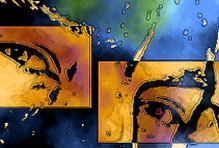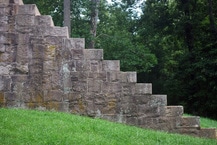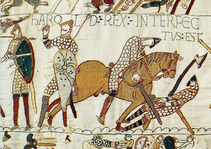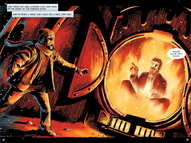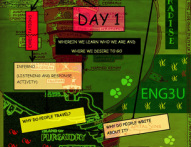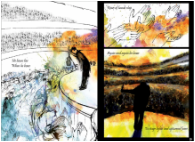THE BASICS
If I were to ask you what you consider to be the greatest work of literature ever written, it might take you a minute or two to think about it. Chances are, though, you'd eventually come up with something that wouldn't seem terribly out of place. You might say Shakespeare's Hamlet or Dante's Inferno or Proust's In Search of Lost Time (although if you were very wise you'd say Dickinson's collected poems). If I were then to ask you what you consider to be the greatest work of art ever produced, the process above would roughly repeat itself, but this time you'd come up with Michelangelo's Sistine Chapel, Da Vinci's Mona Lisa or the Raphael Rooms of the Vatican (although I'm not sure why you didn't say the Pieta). At the end of the exercise, though, you'd probably be able to identify a pretty great work of literature and a pretty spectacular piece of art.
If I asked you, however, what you consider to be the greatest work ever produced that is the combination of literature and visual art, you'd likely have a tougher time of it. You wouldn't necessarily be ready with "The Bayeux Tapestry," Blake's Songs of Innocence and of Experience, or Will Eisner's A Contract with God. What Derrida said about the primacy of the spoken word over the written word in Western culture can also be said of the primacy of art or literature over art and literature. We value great literature and we value great art, but when we combine these two things we see their sum as less than what was added together to begin with.
And I think that's unfortunate.
This carries over into the attitudes that we have towards comics as a genre (and it hasn't helped, by the way, that we've referred to them as "comics"). Chief among these attitudes, of course, is we don't tend to think about comics as a genre in the first place. We ignore the fact that visual narrative is a tradition that has a history, and that its development can be traced over time.
Part of the mission of Comics in Education, then, is to rectify this injustice, and to encourage teachers to research, explore, and share the rich history and tradition of visual narrative with their students.
If I asked you, however, what you consider to be the greatest work ever produced that is the combination of literature and visual art, you'd likely have a tougher time of it. You wouldn't necessarily be ready with "The Bayeux Tapestry," Blake's Songs of Innocence and of Experience, or Will Eisner's A Contract with God. What Derrida said about the primacy of the spoken word over the written word in Western culture can also be said of the primacy of art or literature over art and literature. We value great literature and we value great art, but when we combine these two things we see their sum as less than what was added together to begin with.
And I think that's unfortunate.
This carries over into the attitudes that we have towards comics as a genre (and it hasn't helped, by the way, that we've referred to them as "comics"). Chief among these attitudes, of course, is we don't tend to think about comics as a genre in the first place. We ignore the fact that visual narrative is a tradition that has a history, and that its development can be traced over time.
Part of the mission of Comics in Education, then, is to rectify this injustice, and to encourage teachers to research, explore, and share the rich history and tradition of visual narrative with their students.


